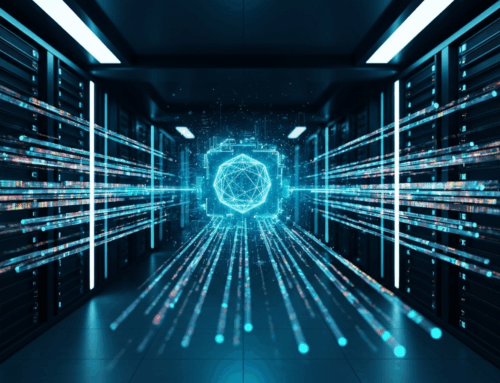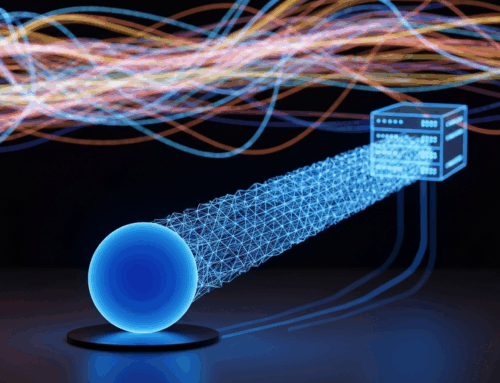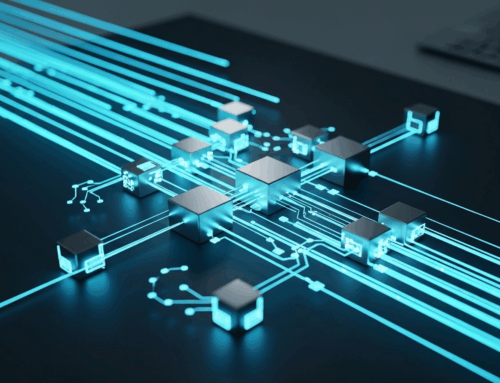Introduction: Unlocking the Agentic AI Advantage in the Enterprise
As businesses navigate the rapidly evolving landscape of artificial intelligence, a new paradigm is emerging that promises to transcend the limitations of previous AI implementations. While generative AI (GenAI) has captivated attention with its ability to create content and synthesize information, many organizations have encountered a “gen AI paradox”—widespread adoption without commensurate bottom-line impact. This is where the agentic AI advantage comes into sharp focus. It represents a fundamental shift from reactive AI tools to proactive, goal-driven virtual collaborators capable of automating complex business processes with unprecedented autonomy.
What is Agentic AI? Moving Beyond Reactive Generative AI
Agentic AI refers to sophisticated AI systems designed to autonomously perceive, reason, plan, and act to achieve complex objectives with minimal human supervision. Unlike generative AI, which excels at producing content in response to specific prompts, agentic AI operates with a distinct “agency.” This means it can initiate actions, adapt to changing conditions, and orchestrate multi-step workflows independently. Where generative AI is primarily a reactive tool for creation, agentic AI is a proactive system for decision-making and execution.
The core differences lie in their capabilities and operational models:
- Autonomy: Agentic AI can take goal-directed actions independently, setting subtasks and executing them without constant human input. Generative AI, while powerful in content generation, typically requires direct prompts for each output.
- Decision-Making: Agentic AI is designed for complex decision-making, assessing situations, evaluating alternatives, and determining optimal paths forward. Generative AI’s decision-making is more basic, focused on selecting the most probable output based on learned patterns.
- Adaptability and Learning: Agentic AI continuously learns from its interactions and experiences, adjusting its plans and strategies in real-time. This iterative self-improvement is a hallmark of its design. Generative AI primarily adapts its output style or content based on feedback during training, rather than dynamically altering its operational strategy.
- Workflow: As highlighted in an analysis comparing agentic and generative AI, agentic AI follows an iterative, cyclical workflow involving stages of “Thinking/Research” and “Revision,” leading to self-assessment and improvement. Generative AI typically follows a straightforward, single-step process, producing an immediate response without revisiting or refining its output.
The evolution from simple chatbots to intelligent copilots, and now to autonomous agents, signifies a seismic shift in enterprise AI, unlocking new frontiers of automation and efficiency.
Transforming Operations: The Strategic Impact of Autonomous Agents
The strategic impact of autonomous agents on enterprise operations is profound, moving beyond mere efficiency gains to supercharge operational agility and unlock new revenue opportunities. Agentic AI can transform processes in several key ways:
- Accelerated Execution: By coordinating and executing multiple steps simultaneously, agents eliminate delays and enable parallel processing, significantly reducing cycle times and boosting responsiveness.
- Adaptability: Agentic systems can continuously ingest data and adjust process flows on the fly, reshuffling task sequences, reassigning priorities, or flagging anomalies before they escalate.
- Personalization at Scale: Agents can tailor interactions and decisions to individual customer profiles or behaviors, dynamically adapting processes to maximize satisfaction and outcomes.
- Elasticity and Resilience: Being digital, agents’ execution capacity can expand or contract in real-time based on workload fluctuations, business seasonality, or unexpected surges, making operations more resilient to disruptions.
Beyond operations, agentic AI amplifies existing revenue streams through proactive analysis and personalized offers, and creates entirely new ones by enabling innovative service and product models. For instance, in an e-commerce setting, agents can analyze user behavior and context to surface real-time upsell and cross-sell opportunities, or for industrial companies, agents embedded in connected products can enable pay-per-use or subscription models.
Real-World Applications: Agentic Workflows in Action
Forward-looking companies are already harnessing the power of agentic AI, demonstrating tangible impacts across various functions. Microsoft, for example, highlights numerous success stories where agents, combined with copilots and human ambition, deliver significant AI differentiation. Some notable examples include:
- Service Management: Atomicwork utilized Azure AI Foundry to create Atom, an AI agent that transformed the digital workplace experience, achieving a 65% deflection rate and projections of 80% by year-end, along with a 20% increase in accuracy and a 75% reduction in response latency.
- Finance and Payroll: BDO Colombia leveraged Microsoft Copilot Studio to develop BeTic 2.0, centralizing and automating payroll and finance processes. This resulted in a 50% reduction in operational workload, 78% optimized internal processes, and 99.9% accuracy in managed requests.
- Supply Chain Optimization: Dow is using agents to automate shipping invoice analysis, expecting to save millions of dollars through increased accuracy in logistic rates and billing within the first year.
- Customer Service: Eneco developed a multilingual agent with Copilot Studio that manages 24,000 chats per month and resolves 70% more customer conversations without a live handoff.
- Sales Automation: Fujitsu leveraged Azure AI Agent Service to develop an intelligent agent for sales automation, boosting sales team productivity by 67%.
These cases underscore the ability of agentic AI to not only improve efficiency but also to drive innovation and create new value across the enterprise. Furthermore, McKinsey research suggests agentic AI has the potential to generate $450 billion to $650 billion in additional annual revenue by 2030, with cost savings ranging from 30% to 50% in advanced industries.
From Optimization to Reinvention: Redefining Business Processes with AI Agents
The true power of the agentic AI advantage lies not in simply optimizing existing tasks, but in fundamentally redefining and reinventing business processes. Merely inserting agents into legacy workflows often leads to marginal gains. The transformative shift occurs when processes are rearchitected from the ground up, with human and agentic coworkers collaborating seamlessly. This involves:
- Reordering Steps: Streamlining the sequence of operations to leverage agents’ parallel execution capabilities.
- Reallocating Responsibilities: Clearly defining roles and handoffs between humans and AI agents to maximize their respective strengths.
- Designing for Autonomy: Building processes that fully exploit agentic AI’s ability for real-time adaptability, deep personalization at scale, and elastic capacity.
For example, a customer call center can move from agents assisting human staff to AI agents proactively detecting issues, initiating resolutions, and communicating directly with customers. Human agents then become escalation managers and quality overseers, intervening only for exceptions. This can lead to a radical improvement in customer service desk productivity, with up to 80% of common incidents resolved autonomously, and a 60% to 90% reduction in resolution time.
Architecting for Autonomy: Building a Robust Agentic AI Foundation
Scaling agentic AI across an enterprise requires a robust architectural foundation. This new paradigm, often referred to as an “agentic AI mesh,” is a composable, distributed, and vendor-agnostic environment built specifically for agent-based intelligence. Key design principles for this foundation include:
- Composability: Any agent, tool, or Large Language Model (LLM) can be seamlessly integrated into the mesh without extensive system rework.
- Distributed Intelligence: Complex tasks can be broken down and resolved by networks of cooperating agents.
- Layered Decoupling: Logic, memory, orchestration, and interface functions are decoupled to maximize modularity and maintainability.
- Vendor Neutrality: Components can be independently updated or replaced, avoiding vendor lock-in and future-proofing the architecture.
- Governed Autonomy: Agent behavior is proactively controlled through embedded policies, permissions, and escalation mechanisms to ensure safe and transparent operation.
Beyond this mesh, organizations must also revisit their LLM strategies, as agents demand models that are autonomous, persistent, and embedded. Ultimately, enterprise systems themselves must evolve towards an “agent-first” model, where user interfaces, logic, and data access layers are natively designed for machine interaction rather than human navigation, as seen with companies like Microsoft and SAP rearchitecting their platforms.
Navigating the Human Element: Trust, Governance, and Workforce Readiness for Agentic AI
While the technical aspects of agentic AI are significant, the greatest challenges and opportunities lie in navigating the human element. The proliferation of autonomous agents introduces organizational complexities around coordination, judgment, and trust, particularly in three dimensions:
- Human–Agent Cohabitation: Agents will not just assist humans but act alongside them. Establishing clear roles, interaction protocols, and maintaining human agency and oversight without hindering benefits requires careful cultural adjustment and experimentation. Trust is built on transparency and predictable behavior.
- Autonomy Control: The power of agents lies in their independence, but this also introduces ambiguity. Robust governance frameworks are essential to align agent behavior with organizational expectations, addressing edge cases, managing risks like “hallucinations” (inaccurate outputs), and ensuring continuous evolution of control mechanisms. As KPMG emphasizes, evolving trusted AI governance and playbooks for agents is a critical step in their adoption roadmap.
- Sprawl Containment: The ease of agent creation with low-code/no-code platforms risks uncontrolled proliferation of redundant or ungoverned agents. Structured governance, design standards, and lifecycle management are crucial to prevent “agent sprawl” and ensure scalability.
Humans remain essential, overseeing model accuracy, ensuring compliance, applying judgment, and handling exceptions. Companies must invest in “human + agent” mindset fostering, targeted training, and supporting early adopters as internal champions. New roles like prompt engineers and agent orchestrators will emerge, and work needs to be deliberately redesigned for effective human-agent collaboration, including simple visual user interfaces.
Seizing the Future: A Strategic Blueprint for Enterprise AI Transformation
The rise of AI agents marks a strategic inflection point that will redefine how companies operate, compete, and create value. Seizing the future requires a reimagined approach to AI transformation, moving beyond scattered pilots to strategic, enterprise-wide programs:
- Strategic Alignment: AI initiatives must be directly aligned with critical strategic priorities, exploring how AI can fundamentally reimagine business segments and create new revenue streams.
- Process-Centric Transformation: The focus shifts from optimizing isolated tasks to transforming entire business processes by embedding agents throughout the value chain, redesigning workflows, decision logic, and human-system interactions.
- Cross-Functional Delivery: AI initiatives can no longer be delivered by siloed AI teams. Cross-functional transformation squads comprising business domain experts, process designers, AI and MLOps engineers, and IT architects are crucial for success at scale.
- Industrialized Delivery: Organizations must move from experimentation to an industrialized delivery model, designing solutions for scalability and financial sustainability from the outset. This includes rigorous estimation of running costs, which can sometimes exceed initial build investments for GenAI solutions.
- Enabling Foundations: Activating robust enablers across people, governance, technology architecture (including an agentic AI mesh), and data (accelerating data productization and addressing quality gaps in unstructured data) is paramount.
The imperative for CEOs is to lead this pivot from the experimentation phase to a new era of scaled transformation. This means boldly envisioning the agentic organization, making AI a prominent part of the top team agenda, and initiating lighthouse transformation projects while simultaneously building the underlying agentic AI technology foundation. Companies that move decisively and responsibly now will not only gain a performance edge but will also redefine what it means to be a high-performing enterprise in the autonomous era.
Ready to redefine your business processes with agentic AI, advanced web development, e-commerce, or digital marketing solutions? Schedule a consultation with Idea Forge Studios today to discuss your unique challenges and unlock your enterprise’s full potential.








Get Social